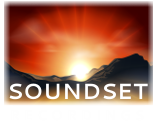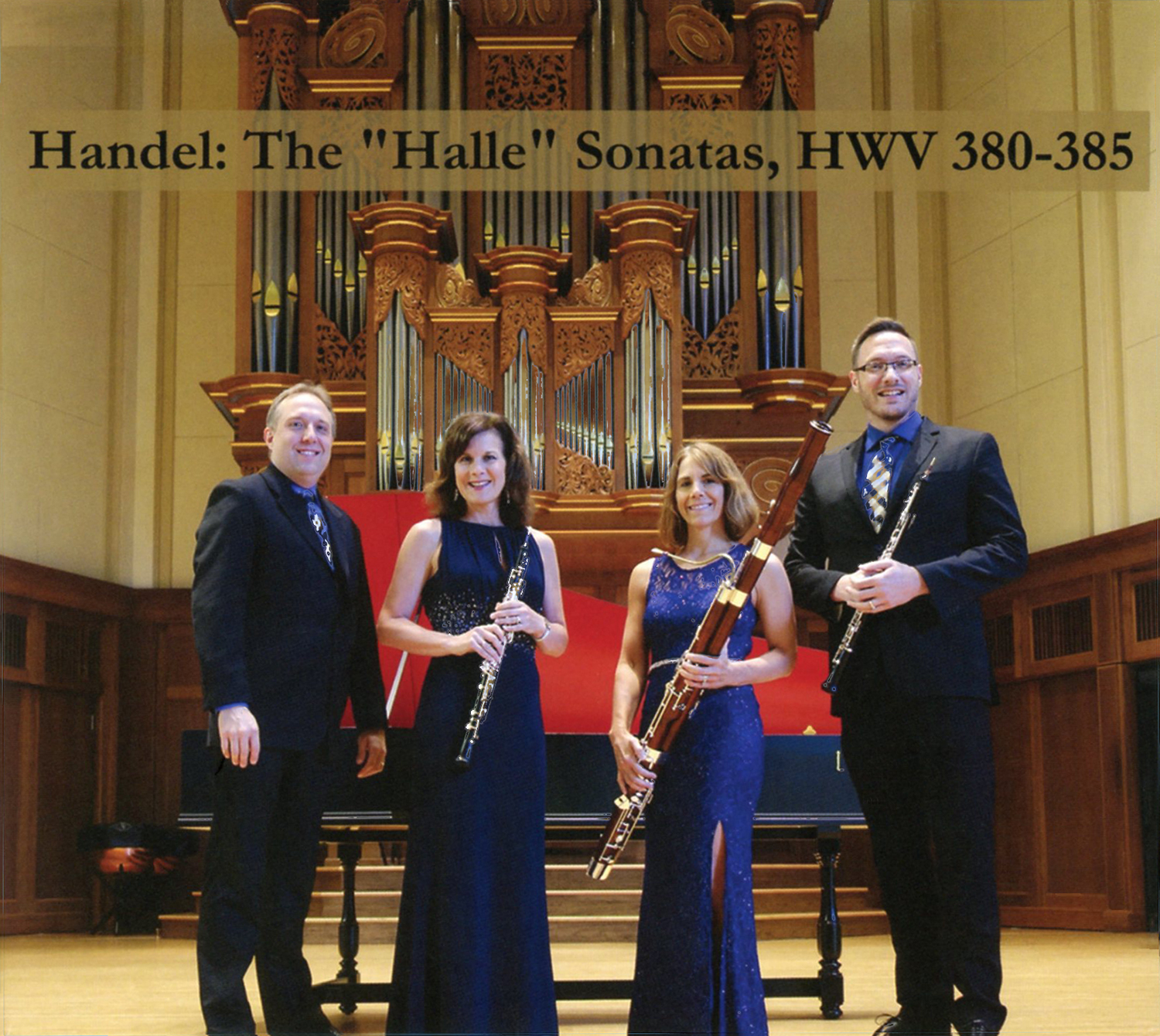The six trio sonatas on this recording are either among Handel’s earliest compositions, written during his schoolboy studies in Halle, or they are not by Handel at all. Their attribution to the famous composer comes from two sources. First is a remark by the music historian Charles Burney in his 1785 “Sketch of the Life of Handel”; Burney reports that Handel began organ studies with Friedrich Wilhelm Zachow, organist of the Marktkirche in Halle, at the age of seven, and that he progressed quickly:
By the time he was nine years old, our young Musician was not only able to officiate on the organ for his master, but began to study composition . . . . The late Mr. Weideman was in possession of a set of Sonatas, in three parts, which Handel composed when he was only ten years old.
The “Mr. Weideman” in question was Carl Friedrich Weidemann (d. 1782), a flutist in the orchestra of the Haymarket Theatre, and hence a colleague of Handel. His copy of these sonatas provides the second source of attributing the sonatas to Handel; it has been preserved in the British Library, and a note in Weidemann’s own handwriting, written on the top of the first treble part, confirms Burney’s anecdote:
The first Compositions Mr Handel made in 3 Parts, when a School Boy, about Ten Year of Age, before he had any Instructions and then playd on the Hautboye, besides the Harpsichord.
This manuscript note is the chief evidence that we have, both for attributing the sonatas to Handel, and for their identification as trio sonatas for oboes. Burney also echoes this manuscript note, with a humorous anecdote about a time that Weidemann showed the sonatas to Handel: Weidemann reported that Handel “seemed to look at them with much pleasure, and laughing, said, ‘I used to write like the Devil in those days, but chiefly for the hautbois, which was my favourite instrument.’”
All of these anecdotes are, of course, no substitute for actual documentation from the composer - and such documentation is distinctly lacking. There is no autograph manuscript of these works, and no statements from Handel himself that he composed trio sonatas at such a young age. Current scholarly consensus is that these works, if not by Handel, are by an early eighteenth-century Italian composer. It is generally agreed that these cannot be oboe sonatas either, at least not the second part, which contains notes outside the range of the baroque oboe, and which also features double-stops in one movement, indicating that the second part is most likely for violin.
None of this historical evidence, however, provides very good reasons not to play these pieces with two oboes and continuo. After all, this is a very old tradition. Weidemann’s manuscript gives the indications “Hautbois 1ma,” “Hautbois 2da,” and “Basso Cimbalo” for its parts, which indicates that at least a few eighteenth-century musicians must have played these pieces in this arrangement. From the nineteenth century onwards, when Friedrich Chrysander published the works as VI Sonatas or Trios for Two Hoboys with a Thorough Bass for the Harpsicord, these works became the property of oboe players. And in any case, the idea of instrumental idiomaticity in a trio sonata would have been anathema to a pragmatic composer in the eighteenth century, who fully intended his music to be played by whatever combination of instruments most pleased players and listeners. So, despite the technical challenges that these pieces pose for the reed players, and despite the historical questions surrounding the works’ provenance, these sonatas are filled with the inventive spirit of the early composers of sonatas da chiesa, and they make a delightful noise for a wind ensemble, provided that the performers play (to borrow Handel’s phrase) “like the Devil.”
- Jonathon Rhodes Lee
By the time he was nine years old, our young Musician was not only able to officiate on the organ for his master, but began to study composition . . . . The late Mr. Weideman was in possession of a set of Sonatas, in three parts, which Handel composed when he was only ten years old.
The “Mr. Weideman” in question was Carl Friedrich Weidemann (d. 1782), a flutist in the orchestra of the Haymarket Theatre, and hence a colleague of Handel. His copy of these sonatas provides the second source of attributing the sonatas to Handel; it has been preserved in the British Library, and a note in Weidemann’s own handwriting, written on the top of the first treble part, confirms Burney’s anecdote:
The first Compositions Mr Handel made in 3 Parts, when a School Boy, about Ten Year of Age, before he had any Instructions and then playd on the Hautboye, besides the Harpsichord.
This manuscript note is the chief evidence that we have, both for attributing the sonatas to Handel, and for their identification as trio sonatas for oboes. Burney also echoes this manuscript note, with a humorous anecdote about a time that Weidemann showed the sonatas to Handel: Weidemann reported that Handel “seemed to look at them with much pleasure, and laughing, said, ‘I used to write like the Devil in those days, but chiefly for the hautbois, which was my favourite instrument.’”
All of these anecdotes are, of course, no substitute for actual documentation from the composer - and such documentation is distinctly lacking. There is no autograph manuscript of these works, and no statements from Handel himself that he composed trio sonatas at such a young age. Current scholarly consensus is that these works, if not by Handel, are by an early eighteenth-century Italian composer. It is generally agreed that these cannot be oboe sonatas either, at least not the second part, which contains notes outside the range of the baroque oboe, and which also features double-stops in one movement, indicating that the second part is most likely for violin.
None of this historical evidence, however, provides very good reasons not to play these pieces with two oboes and continuo. After all, this is a very old tradition. Weidemann’s manuscript gives the indications “Hautbois 1ma,” “Hautbois 2da,” and “Basso Cimbalo” for its parts, which indicates that at least a few eighteenth-century musicians must have played these pieces in this arrangement. From the nineteenth century onwards, when Friedrich Chrysander published the works as VI Sonatas or Trios for Two Hoboys with a Thorough Bass for the Harpsicord, these works became the property of oboe players. And in any case, the idea of instrumental idiomaticity in a trio sonata would have been anathema to a pragmatic composer in the eighteenth century, who fully intended his music to be played by whatever combination of instruments most pleased players and listeners. So, despite the technical challenges that these pieces pose for the reed players, and despite the historical questions surrounding the works’ provenance, these sonatas are filled with the inventive spirit of the early composers of sonatas da chiesa, and they make a delightful noise for a wind ensemble, provided that the performers play (to borrow Handel’s phrase) “like the Devil.”
- Jonathon Rhodes Lee



